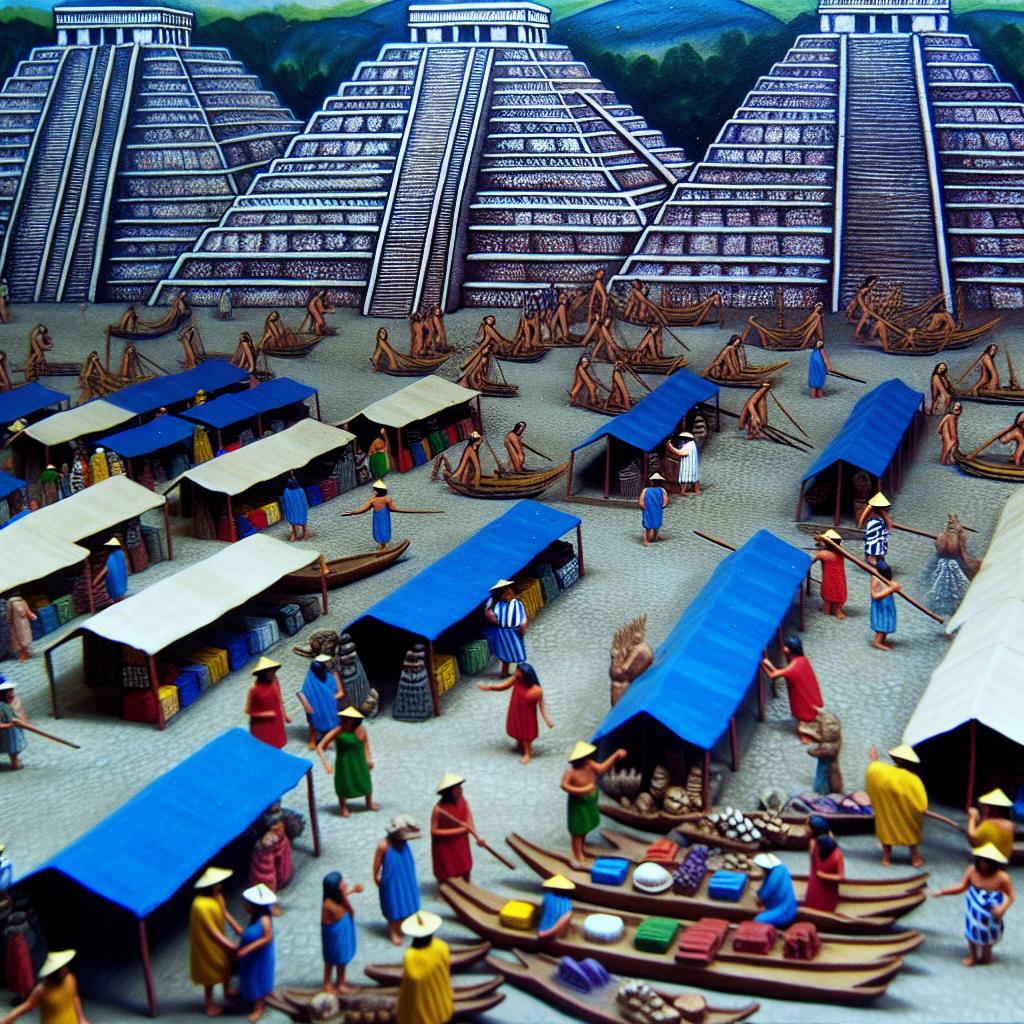The Origins of the Aztec Empire
The history of the Aztec Empire is a captivating tale of resilience and power. Emerging from the northern regions of what is now called Mexico, the Aztec people initially lived as nomadic tribes. They migrated southward, driven by visions and spiritual prophecies, eventually settling in the Valley of Mexico in the early 14th century. Central to their identity was their belief in Huitzilopochtli, the god of sun and war, who guided their journey to establish a new city.
The Foundation of Tenochtitlan
In 1325, the Aztecs founded their capital, Tenochtitlan, on an island in Lake Texcoco. This remarkable city, known for its complex network of canals and causeways, rapidly became the heart of the empire. The legend surrounding its founding tells of an eagle perched on a cactus, a vision that fulfilled their prophecy. This symbolism is enduring, even represented on the modern Mexican flag. The strategic location of Tenochtitlan allowed the Aztecs to control regional trade and military endeavors, marking the beginning of their ascent to power.
The city was intricately planned and engineered to accommodate both the needs of its sprawling population and its defensive requirements. Over time, infrastructure such as temples, palaces, and administrative buildings adorned the city, further asserting its status as a powerful state. Tenochtitlan’s design reflected the Aztec’s ingenuity in urban planning, utilizing the surrounding waters for transport, irrigation, and as a defensive moat against potential aggressors.
Society and Culture
The Aztec society was hierarchically structured, with the Emperor, known as the Tlatoani, regarded as both a political and religious leader. Below him were nobles and priests, followed by warriors, merchants, artisans, and finally, farmers and slaves. This social structure enabled efficient governance and stability, allowing the empire to flourish economically and culturally.
The Aztec Empire was known for its artistic and architectural achievements, including magnificent temples and sculptures. Religion played a critical role, with elaborate ceremonies conducted to honor their numerous deities. Major religious events, such as the festival of Xiuhmolpilli, marked the end of a 52-year cycle and involved complex rituals meant to appease the gods and ensure cosmic stability.
Trade and Economy
The economy of the Aztec Empire was robust, relying heavily on trade and agriculture. They implemented advanced farming techniques, such as chinampas or floating gardens, that enhanced productivity. These artificial islands were cultivated with maize, beans, squash, and other crops, sustaining the large population of Tenochtitlan and supplying its bustling markets.
Marketplaces, such as the grand Tlatelolco market, served as pivotal centers for trade. Here, merchants exchanged goods like cacao, textiles, and precious stones. The market was not only an economic hub but also a place of social interaction where diverse peoples from around Mesoamerica would converge, exchanging ideas and fostering cultural exchange. The stability and growth of the Aztec economy facilitated its expansions and solidified its influence in the region, enabling the flourishing of arts, crafts, and technology.
Military Expansion and Alliances
A key aspect of the Aztec Empire’s rise to power was its military prowess and strategic alliances. As part of the Triple Alliance with Texcoco and Tlacopan, the Aztecs asserted dominance over neighboring regions. This coalition, led by the Aztecs, aimed to expand territorial control, demand tribute, and spread their influence.
Their warriors were highly trained, and battles were often fought to capture prisoners for religious sacrifice rather than territorial conquest. Known as the ‘Flowery Wars,’ these conflicts also served as a means for young warriors to gain prestige and status within Aztec society. The constant expansion and the tributary system provided a vital source of wealth and resources that underpinned the empire’s economy and military endeavors.
The Spanish Conquest
The advent of the 16th century brought new challenges to the Aztec Empire as Spanish explorers, led by Hernán Cortés, arrived on their shores. Initially, Emperor Moctezuma II welcomed the Spaniards, viewing them as potential allies. The Aztec Empire’s vast wealth captivated the Spanish, leading to increased tensions between the two powers.
Despite the warm welcome, misunderstandings and conflicts of interest escalated, resulting in widespread conflict. The combination of European weaponry, previously unknown diseases like smallpox, and discontented local tribes under Aztec rule contributed to the devastating fall of Tenochtitlan in 1521. The Spanish conquest not only marked the end of the Aztec Empire but also initiated a profound transformation in the cultural and political landscape of the region.
The Legacy of the Aztec Empire
In the wake of its destruction, the Aztec Empire left an indelible legacy on the region. Its cultural contributions to language, art, and cuisine continue to echo through modern Mexican society. Indeed, many Nahuatl words, the language of the Aztecs, are still used in Mexican Spanish today.
While the empire as a political entity ceased to exist, the influence of the Aztec civilization can be explored in various academic resources and historical documents. For more comprehensive information, readers might find useful insights in historical archives and museums dedicated to the rich history of the Aztecs. One such resource is available online at the Mexico Tourism official website.
The Aztec Empire’s complex society, cultural achievements, and ultimate downfall remain a subject of study and fascination, providing a window into a rich and vibrant pre-Columbian past. By examining the legacy of the Aztec people, scholars and enthusiasts alike can gain a deeper understanding of the intricate tapestry that was woven by one of the most advanced civilizations of its time.







